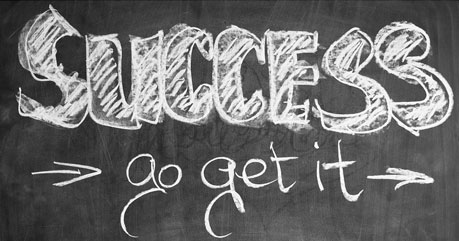In early December, Oyo announced plans to lay off 600 executives across its Product and Technology teams. In the same statement, it announced the hiring of 250 executives in Sales.
This sparked debate across the industry about the best way to structure an SaaS business and appropriately divide investment and resource across Product and Technology, Sales and Operations.
To kick off 2023, we’ve put together some thoughts in response to these big questions based on our experience partnering with SaaS organisations across Europe.
What Makes SaaS Businesses Unique?
Before we jump straight into the minutiae, it can be useful to remind ourselves that SaaS companies are not your average tech start-up.
With the whole concept of SaaS revolving around user licensing/or subscriptions, there are many benefits that set these businesses apart:
-Regular and stable revenue stream based on recurring payment models
-Opportunities to gain feedback from customers in real-time whilst concurrently improving customer retention rates
-Metrics that identify customer preferences, procedural problems (e.g. churn rates) and revenue sources
It’s important for any SaaS company to balance the need for constant product-based business development with operational and administrative support.
Not only that, but organisational structure must ensure a seamless transition for customers as they move throughout the sales pipeline from qualification, through closing to onboarding.
At the end of the day, through a customer’s eyes it’s about how quickly and easily they can start using the product.
What is the Best Structure and at What Stage in Your Growth?
There are many possibilities when it comes to how you structure your SaaS team depending on your business model, stage of growth and product. The most commonly seen structure in practice is outlined below and is recommended by many SaaS industry leaders.
Small businesses
Like any startup, in small SaaS businesses the founder is likely to be responsible for all sales from qualifying leads and conducting sales demos through to onboarding clients. They are then supported in product and tech along with administration/operations.
There is always a critical point when the founder needs to move out of the sales role, which is generally in response to a bottleneck leading to missed opportunities or customer churn.
Medium-sized businesses
As you grow, you’ll likely start building out a focused sales and marketing department which will sit alongside your product and tech and admin/operations. These verticals will likely have their own managers and be responsible for the delivery and development of their teams.
Sales and marketing may divide further into functions such as Sales Development, Business Development, Account Executives and Customer Success mirroring your sales pipeline process.
Large businesses
When you reach 100+ employees, you’ll need to adapt your model again and base it on your business goals and needs. For example, if you have a solid subscription base with minimal churn you might decide to invest more in customer success to drive higher referral rates and upselling opportunities. Or if you’re feeling the pain of churn, you might need to review your product based on feedback.
The Balance Between Customer Success and Sales
Within a mature and high-performing Saas sales pipeline, your Sales and Customer Success teams should be working hand in hand.
The customer journey, regardless of whether it starts as inbound or outbound, hits its most crucial stage when closing and transitioning to onboarding.
And while each team might have different goals (bringing in customers vs retaining customers) there are opportunities for both teams to benefit from working together.
We’ve seen some great examples where sales teams provide customer success with insight and observations that help them tailor communications and reduce churn. On the flipside, customer success can help sales better understand how customers are using the product.
One question we get asked a lot is whether to invest in nurturing your existing client base or bringing in new customers - essentially whether to hire Customer Success Consultants or Sales staff.
Customer Success
In a recent podcast, Nick Mehta, CEO of Gainsight, talked about six “pains” SaaS businesses wrestle with:
1. Do you feel surprised when a customer leaves you?
2. Are your customers fully adopting your product e.g. using all functionality, new releases, etc.?
3. Do you know who is talking to your customer across your company?
4. Are you throwing people at the problem?
5. Do your customers have a great end-to-end experience?
6. Are you under-optimising the ability to expand your customers to sell them more?
Understanding how your business measures up against each of these “pains” can help you define the maturity of your Customer Success team. The solution might not be to add more staff, but rather enhance processes and performance from within.
Sales
On the other side of the coin, Sales is crucial for all SaaS companies, not just those new to the market. It’s a basic requirement for users to get their hands on your software and see how much it improves their day-to-day lives before they even consider becoming lifelong customers.
Even with a satisfied existing membership base, SaaS businesses still need a constant influx of new and potential members to offset risks associated with a low customer switching cost and competitive market.
The fact remains that it’s not possible for organisations to recruit new members at the same pace or faster than they lose them if facing a customer churn crisis.
For that reason alone, it’s critical that both teams receive ongoing development and investment to ensure they are performing at their highest level.
Summary
There’s never a one-size-fits-all answer to building a successful SaaS business and your organisational structure is one that you’ll need to review on a regular basis as you grow.
Finding the balance between investing in a steady stream of new customers and ensuring your existing customer base is happy will depend on the maturity, capability and efficiency of your Sales and Marketing Team.
Here at Harvey Thomas, we work with SaaS organisations across UK, EMEA and the United States, helping them build and source teams that match their growth strategies. If you’re looking for a new Customer Success or Sales role, or wanting to grow these functions within your business, get in touch with one of our specialist recruiters today.


